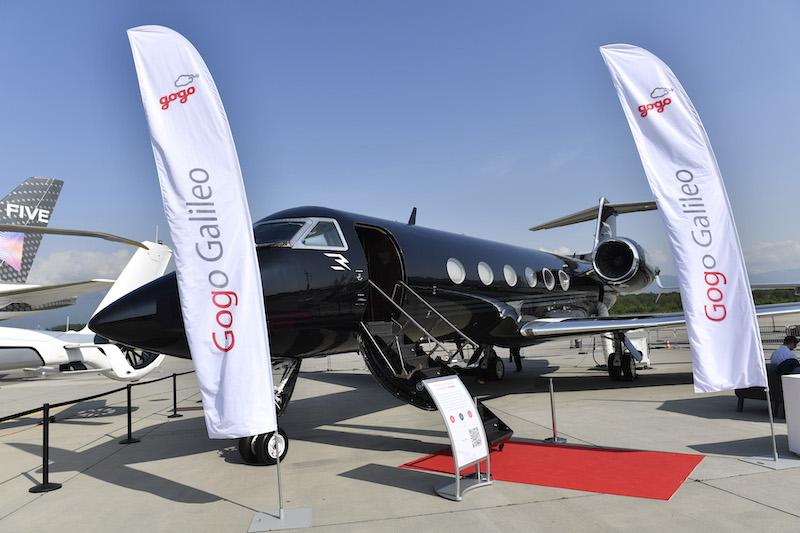
A customer-owned G-IV is showcasing Gogo's Galileo inflight connectivity solution in the EBACE static display.
GENEVA—Partnerships, planning and pragmatic risk reduction were all vital to the successful development of Galileo, the new inflight connectivity solution developed by Gogo.
The company has been showing off the system on a Gulfstream IV in the static display at EBACE. Product demonstrations were briefly suspended on the first day of the show by demonstrations of a decidedly different kind, when climate activists breached security around the static display.
Sergio Aguirre, Gogo company president and chief operating officer, tells ShowNews that he does not wish to be drawn on his views on the protesters' methods or message, but is angry that the safety of his staff and customers was compromised.
"I'm very dissatisfied with EBACE, NBAA and the airport authorities to not be able to protect the exhibitors and the customers that were coming out here," he says. "That's all I'll say about that."
During the show, the company announced that they had begun the process of obtaining Supplemental Type Certification (STC) for Galileo on the Bombardier Challenger 300 series.
"As a general product strategy, Gogo always does an STC, and owns that STC so that we can get PMA [parts manufacture approval] and have the certification path for our own products," Aguirre says.
"That's standard, but what makes it unique with the Galileo project is that this is new antenna technology, new satellite technology, so we recognized that we need to do this on an aircraft that we can demo all around the world to create confidence in the product and the service. From a development standpoint, we've removed every single risk from the program."
Before now, Gogo had published extensive information about the improvements to on-board services that the Galileo system offers by utilizing connectivity OneWeb's low-Earth-orbit (LEO) constellation, including the speed and other capability improvements it represents are detailed in measurable performance metrics.
Now during EBACE, customers have had a chance to see the system in action. Aguirre says this—and the opportunity they have been afforded by the customer who is allowing them to use the G4 to showcase Galileo globally—is proving transformational in getting the message across.
"When you sit down on an aircraft and you see two Netflix going on, somebody playing a Nintendo game, and then somebody Facetiming at the same time, all of a sudden that nebulous figure of 50 Mbps, which nobody knows what it really means, suddenly becomes real," he says. "Then it's like, 'Oh my gosh—I can do what I want?' And the answer is 'Yes'. That's the number one reaction that we get."
The company's ongoing patent dispute with SmartSky has had no impact on development or deployment of Galileo—"or on the sales," Aguirre adds—nor does the company have any concerns that the name it has chosen for the system risks causing confusion in the marketplace with the European global positioning system.
The first element of the name that appealed was the coincidence that the final three letters correspond to the OneSky constellation's altitude. But there were other characteristics associated with the Italian astronomer that the company believes their work shares.
"A lot of people think he invented the telescope," Aguirre says. "He didn't invent the telescope—he improved it and perfected it. Our product offering did not invent satellite communication—we're just improving it and perfecting it for business aviation. Also, he went against common knowledge and expectations of his day, and we're doing the same thing. We're not just introducing new technology, we're changing the performance parameters, the cost parameters, the operational parameters. We're following in his footsteps."
